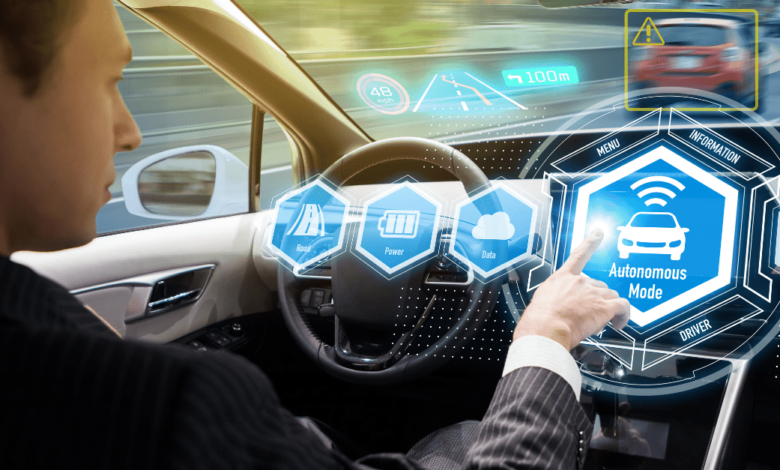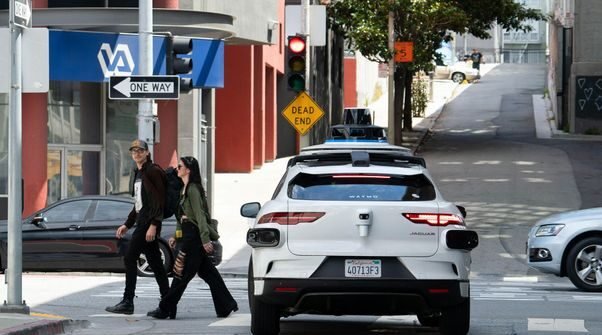Autonomous Vehicles: Towards a Driverless Future

The automotive industry has witnessed a revolution that is set to change the way we commute forever. Autonomous-vehicles, often referred to as self-driving cars, are rapidly advancing towards a driverless future. This article delves into the exciting world of autonomous vehicles, exploring their technology, benefits, challenges, and the impact they will have on our lives.
The Evolution of Autonomous Vehicles
From Dream to Reality
The idea of autonomous-vehicles has been a long-standing dream in the automotive industry. But it wasn’t until the last decade that significant progress was made in transforming this dream into reality.
Levels of Autonomy
Autonomous vehicles are categorized into different levels of autonomy, ranging from Level 0 (no automation) to Level 5 (full automation). Understanding these levels is crucial to grasp the capabilities and limitations of self-driving cars.
Do Autonomous-Vehicles Work
Sensory Perception
Autonomous-vehicles rely on a multitude of sensors, including cameras, lidar, radar, and ultrasonic sensors, to perceive their surroundings. These sensors create a 360-degree view of the car’s environment, allowing it to make real-time decisions.
Artificial Intelligence
AI algorithms process the data collected by sensors, enabling the vehicle to navigate, detect obstacles, and make split-second decisions. Machine learning plays a pivotal role in enhancing the vehicle’s ability to adapt to diverse driving conditions.
Benefits of Autonomous-Vehicles

Enhanced Safety
One of the most significant advantages of autonomous-vehicles is their potential to reduce accidents. With their lightning-fast reaction times and lack of human error, self-driving cars promise to make our roads safer.
Improved Traffic Flow
Autonomous-vehicles communicate with each other, optimizing traffic flow and reducing congestion. This could mean shorter commute times and less time spent stuck in traffic jams.
Challenges on the Road to Autonomy
Legal and Regulatory Challenges
The widespread adoption of autonomous-vehicles faces various legal and regulatory hurdles. Issues such as liability in accidents, insurance, and data privacy need to be addressed before self-driving cars can become commonplace.
Technological Hurdles
While technology has come a long way, there are still technical challenges to overcome. Self-driving cars must perform flawlessly in all weather conditions, recognize complex traffic situations, and ensure cybersecurity to prevent hacking.
The Impact on Society
Mobility for All
Autonomous-vehicles have the potential to revolutionize transportation for individuals with disabilities and the elderly. They could provide newfound independence and accessibility for those who previously relied on others for transportation.
Environmental Benefits
The efficiency of autonomous vehicles can lead to reduced fuel consumption and greenhouse gas emissions. This aligns with global efforts to combat climate change.
In recent years, autonomous-vehicles have emerged as a groundbreaking technological advancement that promises to revolutionize the way we commute and transport goods. These self-driving cars, trucks, and drones are no longer the stuff of science fiction; they are rapidly becoming a reality. In this article, we will explore the profound impact of autonomous vehicles on society.
The Rise of Autonomous-Vehicles

A Brief History
Autonomous-vehicles are not a new concept. The idea of self-driving cars dates back to the early 20th century, with pioneers like Leonardo da Vinci and Isaac Newton conceptualizing the possibility of vehicles that could navigate without human intervention. However, it wasn’t until the 21st century that technology caught up with these visionary ideas.
The Current Landscape
Today, companies like Tesla, Waymo, and Uber are at the forefront of developing autonomous vehicle technology. Tesla’s Autopilot feature, for instance, allows for semi-autonomous driving, while Waymo’s self-driving taxis are already operating in select cities. This marks the beginning of a new era in transportation.
Transforming Transportation
Safety and Accidents
One of the most promising aspects of autonomous-vehicles is their potential to reduce accidents on the road. Self-driving cars rely on advanced sensors and artificial intelligence to navigate, minimizing the likelihood of human errors that often lead to accidents.
Traffic Congestion
Autonomous vehicles can communicate with each other in real-time, optimizing traffic flow and reducing congestion. This means shorter commute times and less time spent stuck in traffic, improving overall productivity and reducing stress for commuters.
Economic Implications
Job Disruption
While autonomous-vehicles offer numerous benefits, they also raise concerns about job displacement. The transportation industry, which employs millions of people worldwide, may see a significant reduction in job opportunities as self-driving technology becomes more prevalent.
New Opportunities
Conversely, the rise of autonomous vehicles will create new job opportunities in fields such as software development, data analysis, and vehicle maintenance. The workforce will need to adapt to these changes and acquire new skills.
Environmental Impact

Reduced Emissions
Autonomous-vehicles have the potential to reduce greenhouse gas emissions significantly. Self-driving cars can optimize routes and driving behavior, leading to fuel efficiency improvements and lower emissions, which is a crucial step in combating climate change.
Sustainable Transportation
The combination of autonomous vehicles and electric propulsion systems can pave the way for more sustainable and eco-friendly transportation options. This shift can have far-reaching positive effects on the environment.
Legal and Ethical Challenges
Liability Issues
Determining liability in accidents involving autonomous-vehicles presents a complex legal challenge. Should the responsibility fall on the vehicle owner, the manufacturer, or the software developer? Legal frameworks must adapt to address these questions.
Ethical Dilemmas
Autonomous-vehicles must be programmed to make split-second decisions in emergency situations. These decisions raise ethical dilemmas, such as whether the vehicle should prioritize the safety of its occupants or pedestrians. Striking the right balance is a critical ethical concern.
Conclusion
The journey towards a driverless future is exciting and full of promise. Autonomous vehicles, with their advanced technology and potential benefits, are poised to reshape our world. As we continue on this path, it is essential to address the challenges and ensure that this transformative technology is integrated safely and responsibly into our lives.
Read More:Cybersecurity in the Age of Digital Transformation
FAQs
Are autonomous-vehicles safe?
Autonomous vehicles have the potential to be safer than traditional cars due to their lack of human error. However, rigorous testing and regulation are essential to ensure their safety.
When will autonomous-vehicles become mainstream?
The timeline for mainstream adoption is still uncertain and may vary by region. It depends on technological advancements, regulatory changes, and public acceptance.
What role does AI play in autonomous-vehicles?
AI is the backbone of autonomous-vehicles, enabling them to process data, make decisions, and navigate. It continually learns from data to improve performance.
Will autonomous-vehicles eliminate the need for traditional driving licenses?
While autonomous vehicles may reduce the need for traditional licenses, it is unlikely to eliminate them entirely, as human-driven vehicles will coexist with self-driving cars for the foreseeable future.
How do autonomous-vehicles handle complex traffic situations?
Autonomous-vehicles use advanced algorithms and sensor data to navigate complex traffic scenarios. They can detect and respond to multiple variables simultaneously, making them capable of handling intricate situations.
Read More: Augmented Reality: Bridging the Gap between Virtual and Real











